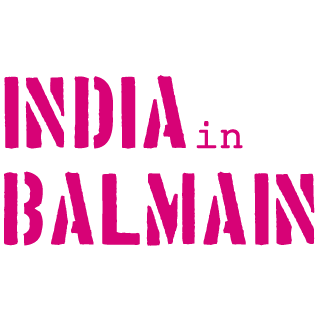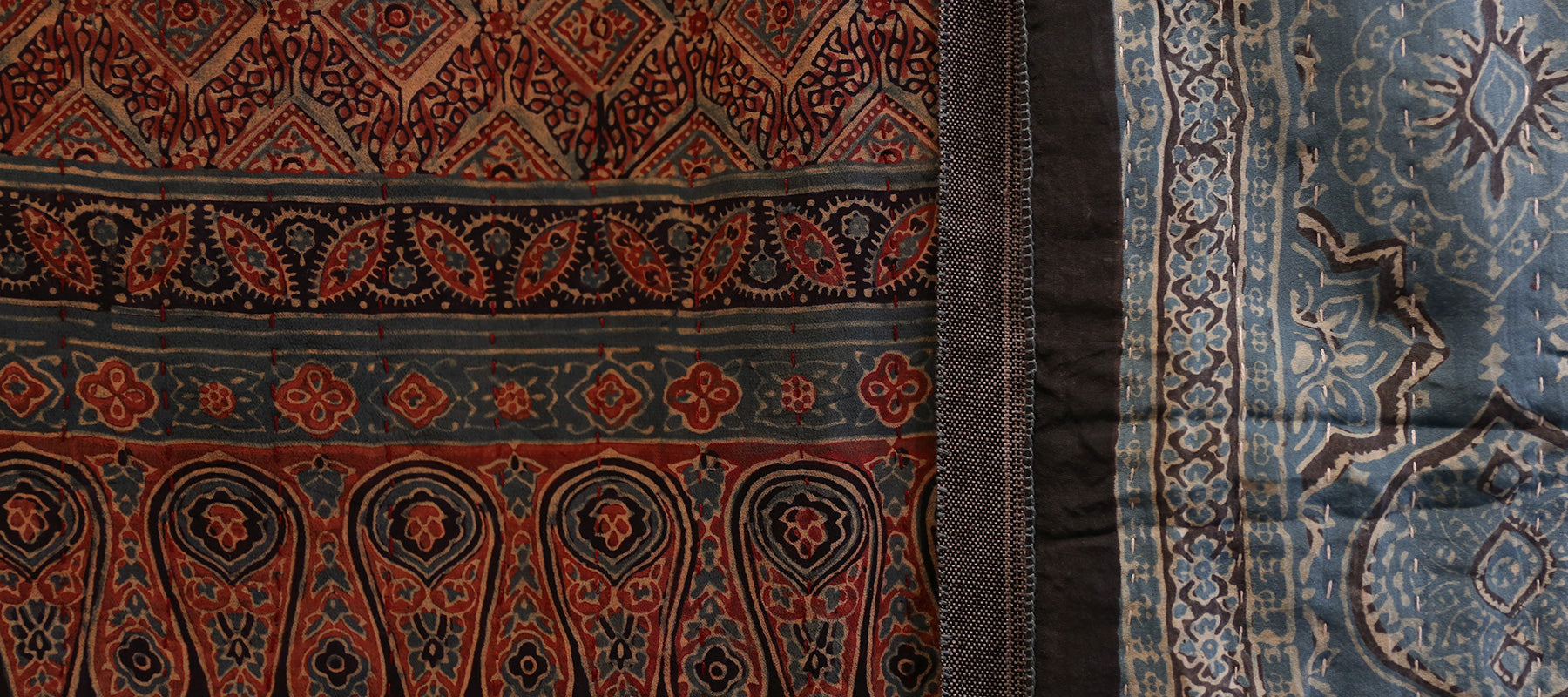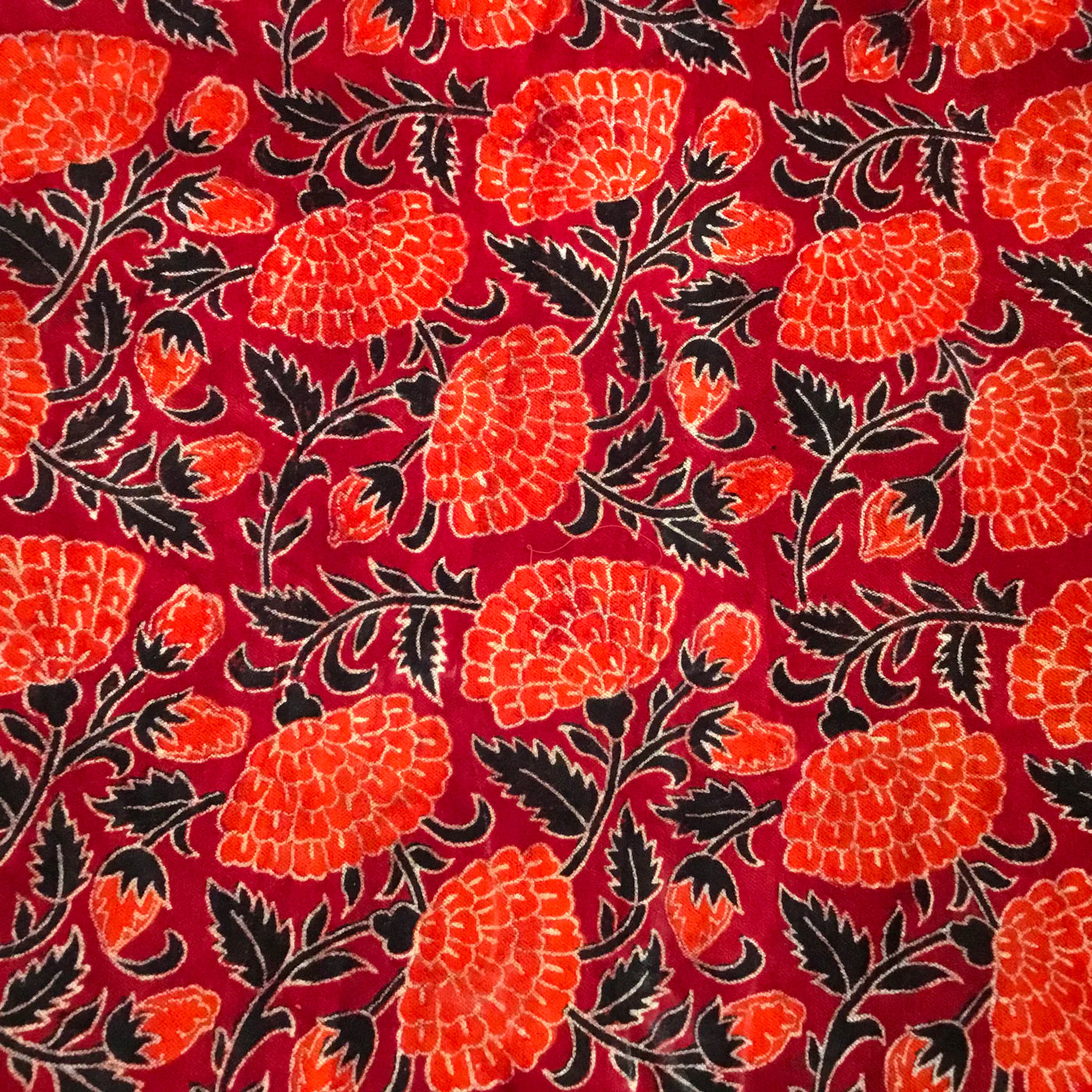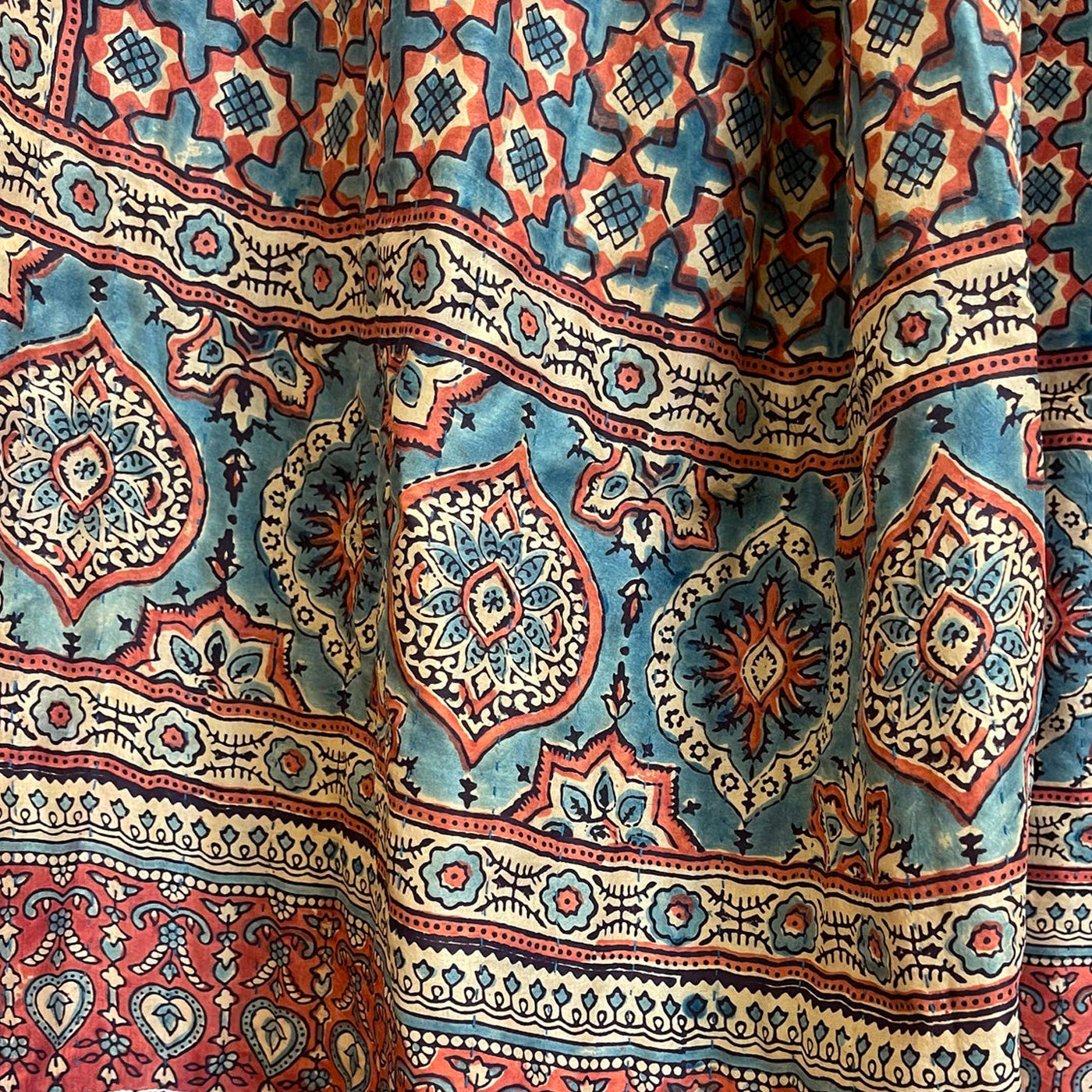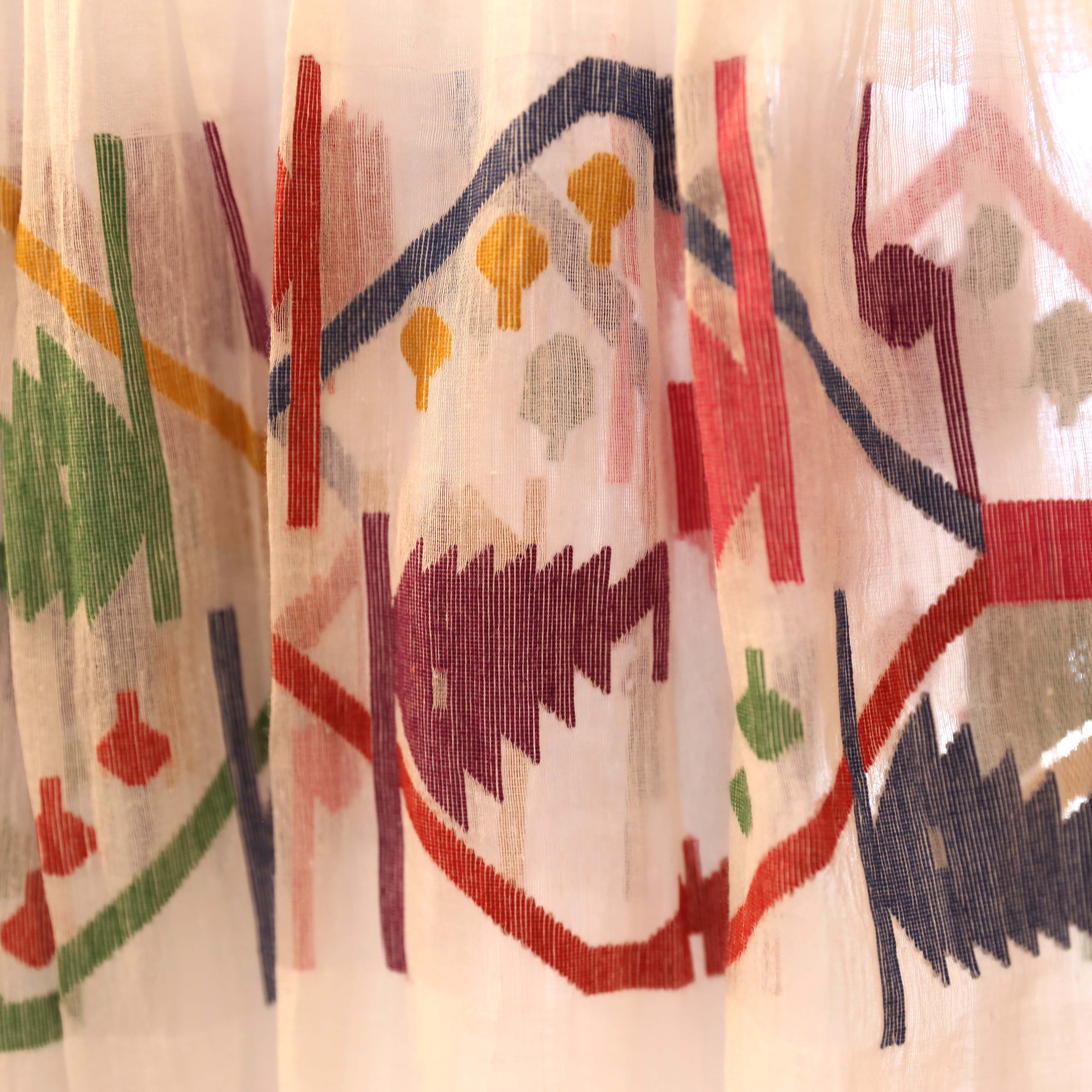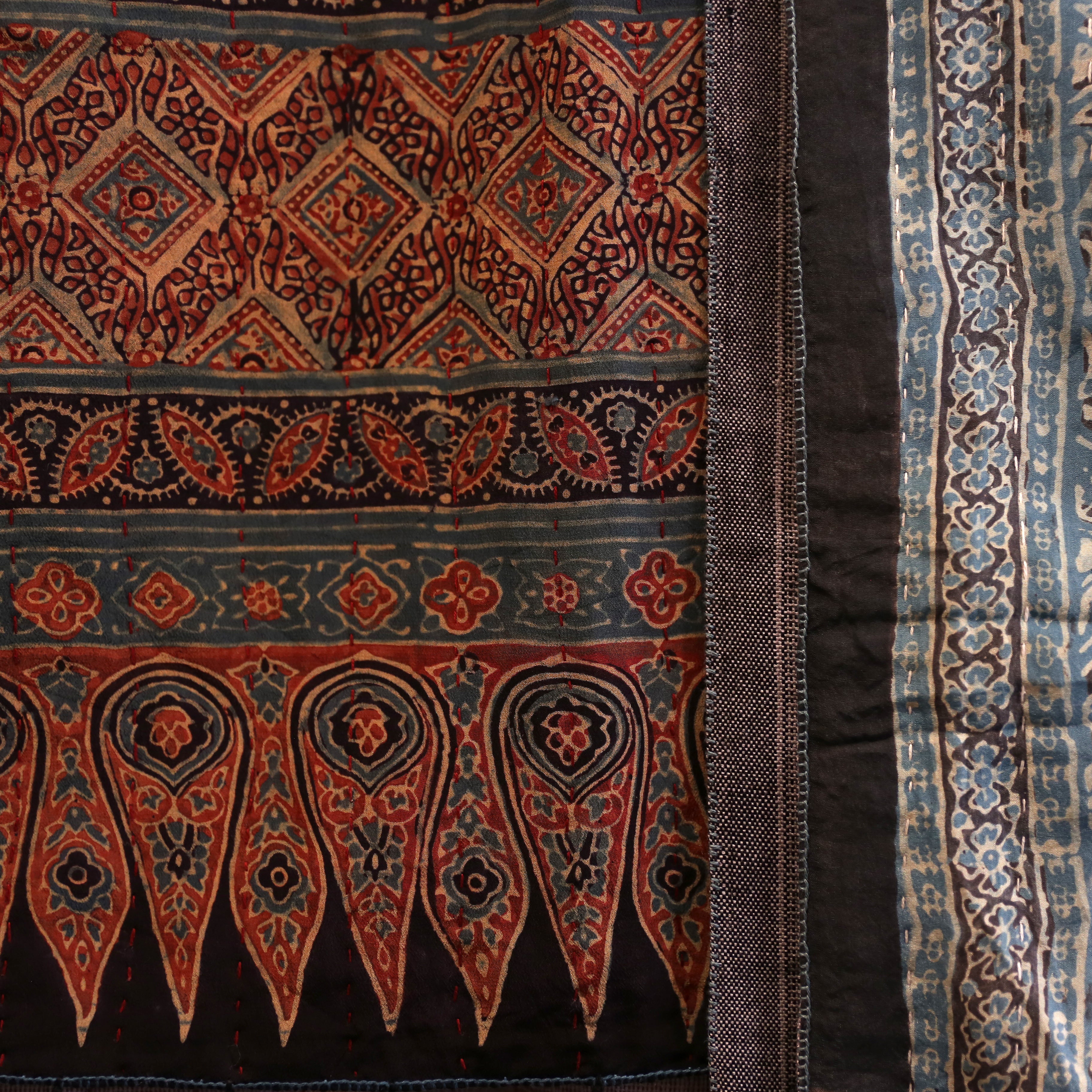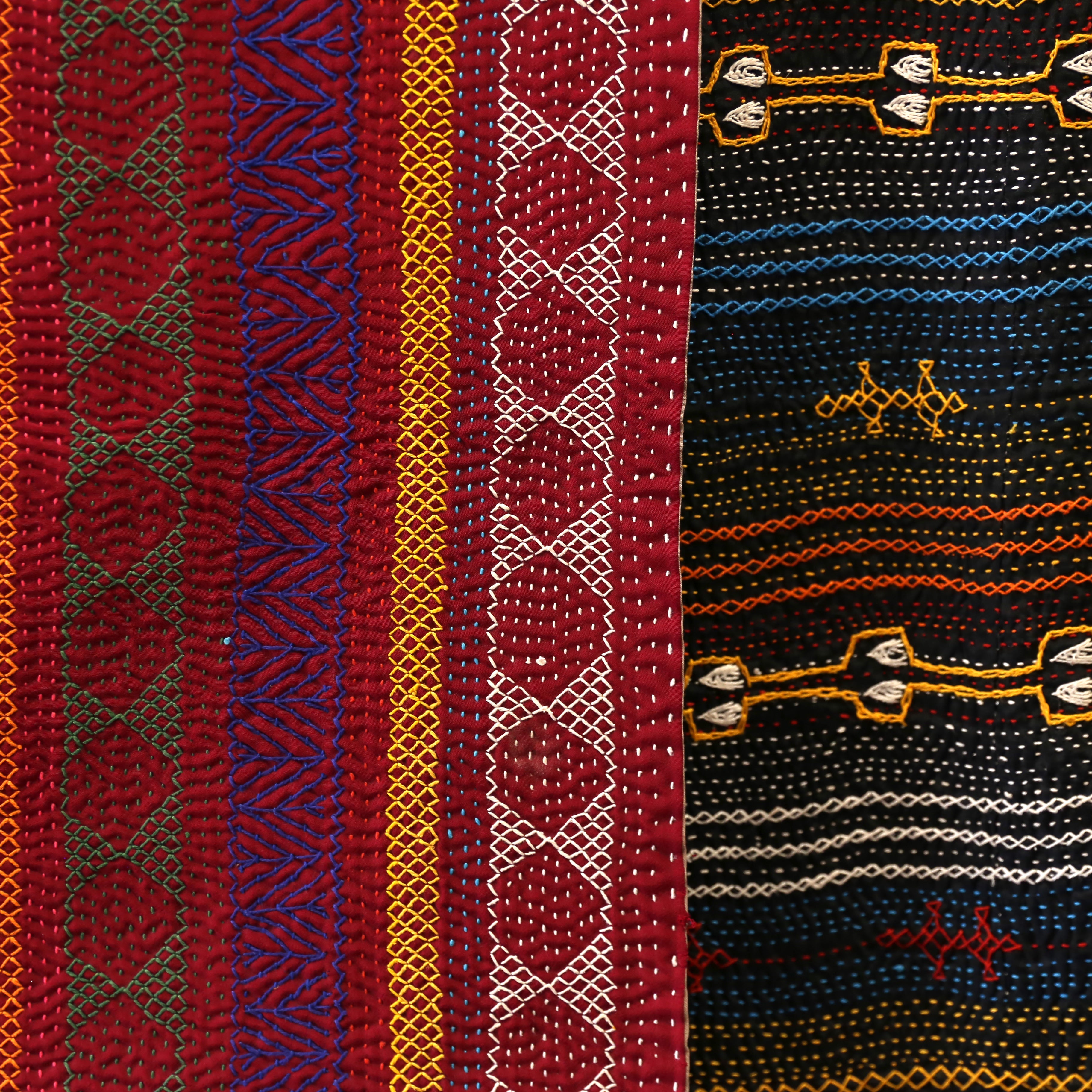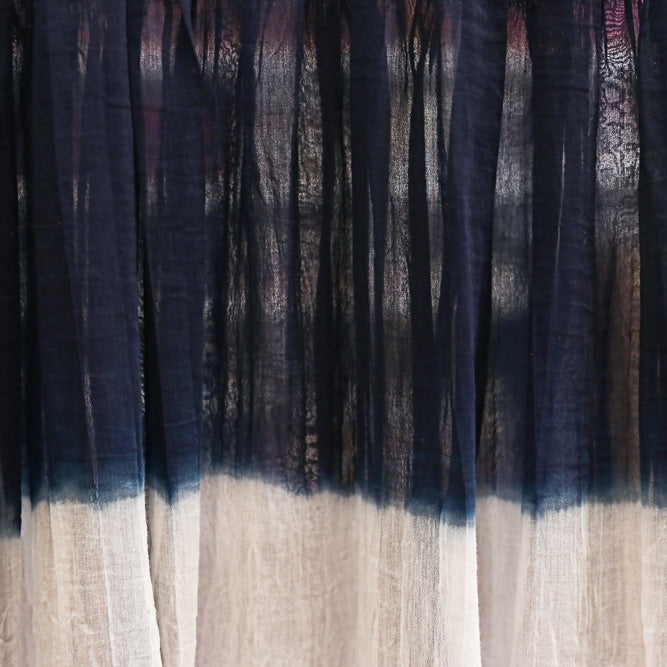Printed ⋮ Ajrakh
THE MEANING OF AJRAKH
Ajrakh cloth carries many meanings. The popular story amongst local printers is that Ajrakh means “keep it today.” It is also linked to azrakh, the Arabic word for indigo, a blue plant which thrived in the arid ecology of Kachchh until the 1956 earthquake. Ajrakh patterns use complex geometry to create starry constellations in indigo, madder, black, and white across lengths of cloth. The shapes and motifs of Ajrakh echo the architectural forms of Islamic architecture’s intricate jali windows and trefoil arches.
Mizan, meaning balance and order in Arabic, is the foundation for Islamic art. Symmetry rules. Elaborate geometric designs and detailed repeats are masterfully balanced, often radiating from a central ‘star’. Adhering to islamic design principles, human and animal forms are avoided.
HISTORICAL BACKGROUND
Archeological evidence suggests that for thousands of years Ajrakh artisans were located near the banks of the Indus river. The river provided both a site for washing cloth and the water needed to grow indigo. With the partition of India and Pakistan in 1947, artisan communities were tragically separated. Today the craft continues with variations on both sides of the border. Indian artisans are centred in Gujarat with most communities living in the Kutch desert. IN 2001 a devastating earthquake struck the Kutch region. Villages and towns were decimated, including Dhamadka, the khatris ancestral home. As testament to the community’ strength , the craftspeople drew closed and rebuilt their lives in the new town of Ajrakhpura. Today, they continue to work and thrive.
Ajrakh is a time-honored emblem for the local communities of Kutch. Nomadic pastoralist and agricultural communities like the Rabaris, Maldharis, and Ahirs wear Ajrakh printed cloth as turbans, lungis, or stoles. It was given as a gift for the Muslim festival of Eid, for bridegrooms, and for other special occasions. The colours of a true Ajrakh textile are fast. The cloth is made in a many stepped process of washing, dyeing, printing, and drying, which requires a high level of skill and concentration in order to keep colours fast and even. Pomegranate seeds, gum, harda powder, wood, various local flowers, alizarine and locally cultivated Indigo are just some of the natural resources that printers in this craft.
PROCESS
The ajrakh process is a long one, involving between thirteen to twenty distinct steps .
The many processes of scouring, washing, printing, dying and final washing can take up to three weeks to complete. The order is of utmost importance as the layers of colour are built up and the traditional geometric ajrakh patterns emerge.
Bales of cotton yardage are torn by hand into 10 meter lengths and folded to permit easy handling. The raw cotton is scoured with soda ash, sometimes it is soaked overnight, sometimes it is steamed for an entire day. The cloth is washed and rinsed: if washed in the river it is thrashed against flat stones; if it is washed in an artisan’s cistern (increasingly necessary with falling water tables) it is beaten with wooden paddles. The washed cloth is next treated with a solution of cow or camel dung, often with castor oil added. It is washed and thrashed again.
Two weeks can be spent preparing the cloth before printing even begins. To appreciate how such complexity evolved it is important to realise that colour on cloth is not achieved through printing just a dye. The artisan is not using pigments. Rather, three elements are deployed in various combinations: tannins, mordants, and dyes. Tannins can be either coloured or colourless, mordants can be mineral salts such as alum (but a copper mordant is also occasionally used); dyes can come from a wide range of sources including vegetable (madder, pomegranate, turmeric, and so on) or insect sources (lac for example) or minerals (iron salts such as ferrous sulphate and ferrous acetate), and some dyes, such as indigo, behave in a way that puts them in a class all their own. Altering the pH of the dye process or the temperature of a dye vat will shift colours into colder or warmer shades.
The intricate designs demand great focus and commitment. The marvel of a two sided ajrak, with the pattern registered and printed once on the front and reversed on the back, is a testament to the precision and capability of the creative spirit. Here, the best chhipas and ranger, manipulate dyes, mordants and resists to create lavish pieces that demonstrate full mastery of the craft.
INDIA in BALMAIN actively seeks to support ajrakh artisans who live and work in the Kutch desert, working with natural dyes.
References:
Imprints of Culture. Eiluned Edwards 2019
Anokhi Handblockopedia 2014
khamir.org, Maiwa
